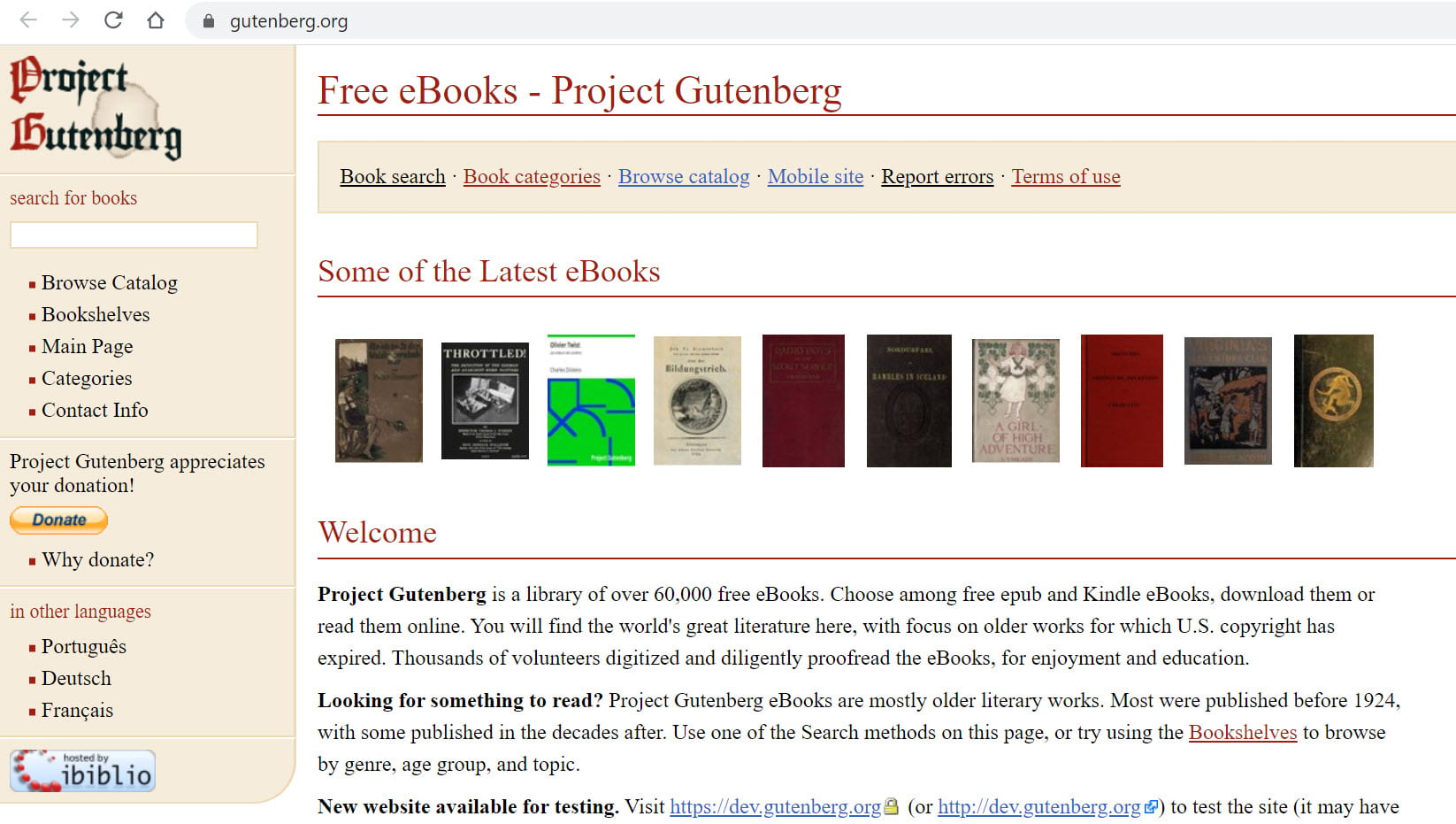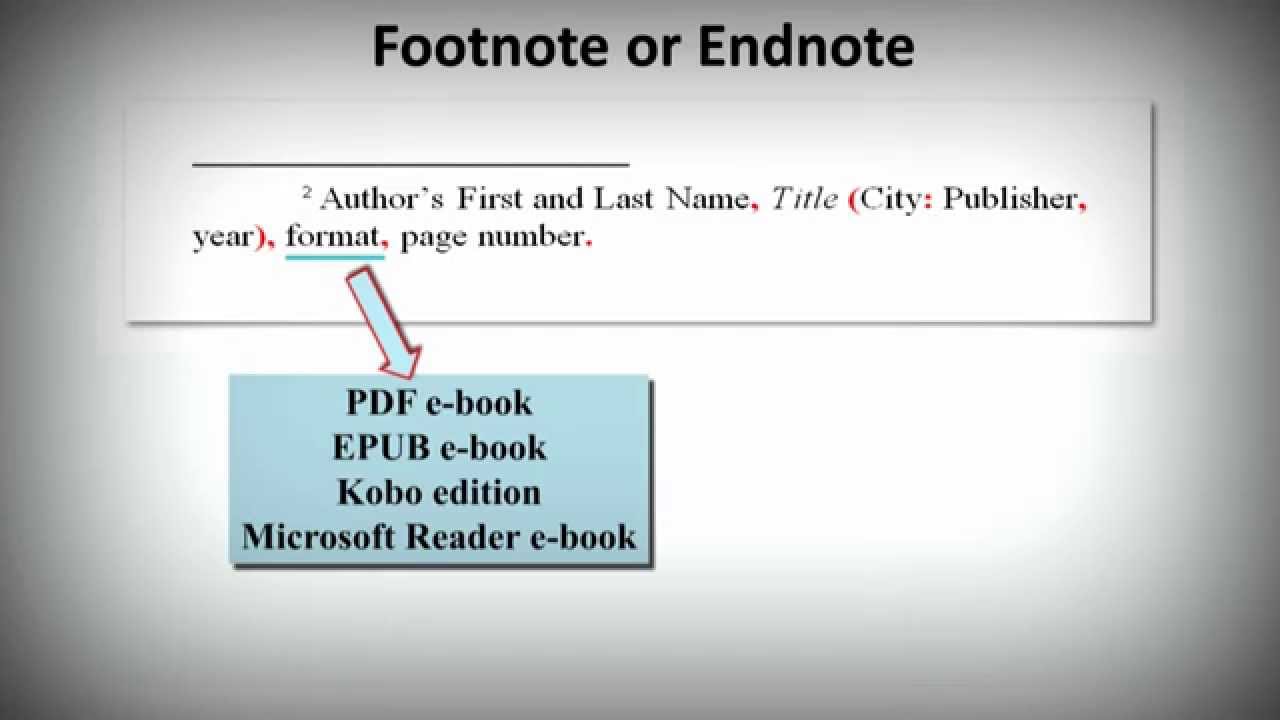Introduction
Welcome to the digital age, where reading has undergone a transformation with the rise of eBooks. Gone are the days of carrying around heavy books or waiting for them to be delivered. eBooks have made reading more accessible, convenient, and eco-friendly. With the growing popularity of eBooks, it is essential to understand the different eBook formats and their significance.
In this article, we will explore what eBook formats are, why they matter, and the most common eBook formats available. Whether you’re an avid reader, a self-published author, or just curious about eBooks, this guide will help demystify the world of eBook formats and empower you to make informed choices.
As technology continues to advance, so does the eBook industry. With a myriad of eBook formats available, it is important to understand their compatibility, features, and advantages. By understanding eBook formats, you can ensure your eBooks are formatted correctly, and readers can enjoy a seamless reading experience on their preferred devices.
So, let’s delve into the world of eBook formats and discover why they are crucial in the digital reading landscape.
What is an eBook Format
An eBook format refers to the specific file format in which an electronic book is encoded. Essentially, it is the digital container that holds the content, layout, and formatting of the book. Just as physical books come in various sizes and formats, eBooks also have different formats to accommodate a wide range of e-readers, tablets, and mobile devices.
eBook formats play a vital role in ensuring that the content of the book is displayed correctly and can be read on different devices. They determine how the text, images, and other elements are structured within the eBook file and how they are rendered on the screen. Additionally, eBook formats may include features such as hyperlinks, annotations, and DRM (Digital Rights Management) restrictions.
The choice of eBook format depends on several factors, including the e-reader or device being used, the desired features, and the overall compatibility. Different eBook formats have varying levels of support for different devices and platforms. Therefore, it is essential to choose an eBook format that is widely supported to reach a broader audience.
It’s worth noting that eBook formats are not interchangeable. Each format has its own coding structure and is designed to work with specific software or devices. Converting an eBook from one format to another may result in formatting issues or the loss of certain features or functionalities.
In order to create, distribute, and read eBooks, it is important to understand the most common eBook formats and their specifications. In the next section, we will explore the significance of eBook formats and why they are crucial in the world of digital publishing and reading.
Why eBook Formats Matter
eBook formats are of paramount importance in the digital reading landscape. They play a crucial role in ensuring compatibility, readability, and functionality across various devices and software platforms. Here are several reasons why eBook formats matter:
- Device Compatibility: eBook formats determine whether an eBook can be read on a specific e-reader or device. Different devices support different eBook formats, so choosing the right format ensures that your eBook can be accessed by a larger audience.
- Formatting and Layout: eBook formats preserve the original formatting and layout of the book, ensuring that the text, images, and other elements appear correctly on the screen. This is particularly important for books with complex formatting, such as textbooks or children’s books.
- Interactive Features: Some eBook formats support interactive features like hyperlinks, bookmarks, annotations, and multimedia elements. These features enhance the reading experience and offer additional functionality, making eBooks more engaging and immersive.
- File Size and Compression: eBook formats employ different compression techniques to reduce file size without compromising on quality. This is especially crucial for users with limited storage space on their devices or those who prefer faster download times.
- Protection and DRM: eBook formats often include built-in Digital Rights Management (DRM) measures to protect the intellectual property of authors and publishers. DRM can prevent unauthorized copying, printing, or sharing of eBooks, safeguarding the rights and revenue of content creators.
- Accessibility: Certain eBook formats, such as EPUB, include features that improve accessibility for users with visual or reading impairments. These features may include text resizing, font customization, and compatibility with screen readers.
In summary, eBook formats are essential for ensuring compatibility, maintaining the integrity of the book’s formatting, enabling interactive features, managing file sizes, protecting copyright, and enhancing accessibility. Understanding eBook formats allows authors, publishers, and readers to make informed decisions and optimize the reading experience across multiple devices and platforms.
Common eBook Formats
In the vast landscape of eBook formats, several formats have established themselves as the industry standards. Each of these formats has its own set of features, compatibility, and advantages. Let’s explore some of the most common eBook formats:
-
EPUB:
EPUB (Electronic Publication) is a widely used and highly versatile eBook format. It is an open standard format maintained by the International Digital Publishing Forum (IDPF). EPUB supports dynamic layouts, resizable text, embedded multimedia elements, and interactive features. It is compatible with a wide range of e-readers, tablets, and mobile devices.
-
MOBI:
MOBI, short for Mobipocket, was a popular eBook format used extensively by older Kindle devices. While it remains compatible with some Kindle devices, MOBI has largely been replaced by Amazon’s proprietary formats. However, it can still be converted to other formats like AZW or EPUB with the help of certain eBook conversion tools.
-
PDF:
PDF (Portable Document Format) is a widely recognized format for documents, including eBooks. PDF is known for its fixed layout, which preserves the formatting and appearance of the book across different devices and screen sizes. It is compatible with various software platforms and can be easily viewed using dedicated PDF reader applications or web browsers.
-
AZW:
AZW is Amazon’s proprietary eBook format exclusively used for Kindle devices. It is similar to MOBI but supports additional features and DRM encryption. AZW files can be downloaded directly from the Amazon Kindle store and can only be read on Kindle devices or Kindle reading apps.
-
KF8:
KF8 (Kindle Format 8) is Amazon’s newer eBook format, introduced to support advanced features and layouts. KF8 is compatible with the latest generation of Kindle devices, offering enhanced typography, fixed layouts, embedded fonts, and more sophisticated formatting options. It is designed to provide a richer and more immersive reading experience.
These are just a few examples of the many eBook formats available. Each format has its own strengths and considerations, and choosing the right format depends on factors such as device compatibility, desired features, and target audience. It is important to select an eBook format that aligns with your specific needs and the platforms you intend to distribute your eBook on.
EPUB
EPUB (Electronic Publication) is one of the most widely used eBook formats in the digital publishing industry. It is an open standard format maintained by the International Digital Publishing Forum (IDPF). EPUB files are designed to be flexible and adaptable, allowing readers to enjoy the same eBook on various devices and software platforms.
One of the key advantages of EPUB is its support for dynamic layouts. The content in an EPUB file can adjust according to the screen size and orientation of the device being used. This makes EPUB ideal for reading on different screen sizes, from smartphones and tablets to e-readers and computers.
EPUB also offers features that enhance the reading experience. Users can resize text, change font styles, customize margins, and even switch to night mode for comfortable reading in low-light conditions. EPUB supports embedded multimedia elements like audio, video, and interactive features, making it suitable for textbooks, children’s books, and other visually engaging content.
EPUB files are compatible with a wide range of e-readers and reading apps, such as Adobe Digital Editions, Apple Books, Google Play Books, and many more. This compatibility allows readers to access their EPUB eBooks on different devices without any restrictions.
Another noteworthy aspect of EPUB is its support for accessibility features. EPUB supports text resizing, font customization, and compatibility with screen readers, making it more inclusive for readers with visual impairments or reading difficulties.
EPUB files are typically DRM-protected, which means that publishers can apply digital rights management restrictions to protect their intellectual property. DRM allows publishers to control aspects such as copying, printing, and sharing of the eBook to prevent unauthorized use.
With its flexibility, rich features, and wide compatibility, EPUB has become the standard format for eBooks in the publishing industry. It provides a user-friendly reading experience, enables publishers to create visually engaging content, and ensures that eBooks can be accessed on a variety of devices.
MOBI
MOBI, short for Mobipocket, is an eBook format that gained popularity with older Kindle devices. While MOBI is now mostly obsolete, it is still compatible with some Kindle e-readers and can be converted to other formats to ensure wider compatibility.
MOBI files are designed to support reflowable text, enabling readers to adjust font sizes, styles, and line spacing according to their preferences. However, unlike EPUB, MOBI does not support complex layouts or advanced formatting options.
One advantage of MOBI is its compatibility with Amazon’s Kindle devices and reading apps. Readers can download MOBI files directly from the Amazon Kindle store and enjoy a seamless reading experience on their supported devices. Additionally, MOBI files can also be read on various e-reading software platforms, such as Calibre and FBReader, with the appropriate plugins or conversions.
One drawback of MOBI is its lack of widespread support outside the Kindle ecosystem. While MOBI can be converted to other formats like EPUB using conversion tools, the process may result in formatting issues or the loss of certain features or functionalities.
It’s important to note that MOBI has largely been replaced by Amazon’s proprietary formats, such as AZW and KF8. If you are publishing eBooks, it is recommended to consider using the more recent Kindle formats to ensure the best reading experience on Kindle devices.
Despite its declining popularity, MOBI can still be relevant for authors and publishers who have legacy content in this format or who want to provide compatibility with older Kindle devices. Converting MOBI files to other formats like EPUB or PDF may be necessary to reach a broader audience beyond Kindle devices.
In summary, MOBI is an eBook format primarily associated with older Kindle devices. While it may not offer the same level of flexibility and advanced features as other formats like EPUB, it can still be used for specific scenarios, especially for readers who prefer the Kindle ecosystem.
PDF (Portable Document Format) is a widely recognized and versatile eBook format that is commonly used for documents, including eBooks. It was developed by Adobe Systems and has become a standard for sharing and viewing various types of digital content, including eBooks.
One of the standout features of PDF is its fixed layout, which preserves the formatting, fonts, and images of the original document across different devices and operating systems. This ensures that the content of the eBook appears as intended by the author or publisher, regardless of the device or software used to view it.
PDF files are highly accessible and can be read on numerous platforms, including desktop computers, laptops, smartphones, and tablets. Dedicated PDF reader applications, such as Adobe Acrobat Reader, are available for free, making it easy for readers to access PDF eBooks without the need for specialized e-reader devices.
PDF is known for its compatibility and reliability. With its widespread usage and support, PDF files can be opened on various operating systems, including Windows, macOS, Linux, and mobile platforms like iOS and Android.
While PDF offers a fixed layout, it still provides interactive features such as hyperlinks, bookmarks, annotations, and form fields. These features add functionality to the eBook and enhance the reading experience, making PDF suitable for textbooks, manuals, and documents that require interactive elements.
Another advantage of PDF is its ability to handle complex visual elements, such as graphics, charts, and illustrations. PDF files can maintain high-quality images and support vector graphics, ensuring that the visuals in the eBook are displayed accurately and crisply.
Despite its many advantages, PDF may not be ideal for all eBook scenarios. Its fixed layout can cause challenges when viewing on smaller screens, as the content may require zooming or scrolling. Additionally, PDF files tend to have larger file sizes, which may hinder efficient storage and distribution, especially on devices with limited storage capacity or slow internet connections.
In summary, PDF is a widely recognized and versatile eBook format known for its fixed layout, compatibility, and support for interactive features. It is ideal for documents that require precise formatting and complex visual elements. However, considerations should be given to file size and device compatibility when deciding to use PDF as an eBook format.
AZW
AZW is an eBook format developed and used exclusively by Amazon for their Kindle e-readers and reading apps. It stands for Amazon Kindle eBook format and is based on the Mobipocket format. AZW files have built-in DRM (Digital Rights Management) protection, which ensures that the eBooks can only be read on authorized Kindle devices or Kindle reading apps.
One of the advantages of AZW is its seamless integration with the Amazon Kindle ecosystem. Readers can purchase and download AZW files directly from the Amazon Kindle store, making it convenient for Kindle users to access a vast library of eBooks. AZW files can be easily synced across multiple devices, allowing readers to pick up where they left off, regardless of the device they are using.
AZW supports features such as resizable text, annotations, bookmarks, and syncing of personal highlights and notes. This provides a personalized reading experience and allows readers to interact with the content in meaningful ways.
Although AZW is primarily associated with Amazon’s Kindle devices, the Kindle reading app is available for various platforms, including iOS, Android, and desktop. This enables readers to access their AZW eBooks on different devices, even if they don’t own a Kindle device.
It’s worth noting that the newer Kindle devices and apps also support other eBook formats, such as AZW3 and KFX, which offer enhanced features and better compatibility with modern e-readers.
One limitation of AZW is its compatibility outside of the Kindle ecosystem. AZW files are not widely supported by e-readers or reading apps from other manufacturers. However, AZW files can be converted to other formats like EPUB using eBook conversion tools, allowing for broader compatibility on non-Kindle devices.
In summary, AZW is an eBook format exclusive to Amazon’s Kindle devices and reading apps. It offers seamless integration with the Kindle ecosystem, DRM protection, and personalized reading features. While AZW files may have limited compatibility outside of the Kindle ecosystem, they can be converted to other formats to reach a wider audience.
KF8
KF8, short for Kindle Format 8, is an eBook format developed by Amazon to enhance the reading experience on their newer Kindle devices. It is an upgraded version of the older MOBI format and offers more advanced features and formatting options.
One of the key advantages of KF8 is its support for enhanced typography. KF8 allows for more precise control over fonts, sizes, and spacing, resulting in improved readability and a more polished appearance for eBooks. This makes KF8 particularly suitable for eBooks with complex layouts, such as graphic novels or books with intricate designs.
KF8 also supports embedded fonts, which ensures consistent typography across different devices. This allows publishers to maintain their intended design and formatting, making KF8 ideal for eBooks that heavily rely on specific fonts or typefaces.
With KF8, publishers have more control over image layouts and can include high-resolution images, ensuring that visual elements are sharp and vibrant on compatible Kindle devices. This is especially beneficial for eBooks with images, illustrations, or photographs.
KF8 files are compatible with the latest generation of Kindle devices, including the Kindle Fire tablets and Kindle e-readers with enhanced capabilities. To take full advantage of KF8 features, it is recommended to create eBooks using Amazon’s Kindle Publishing Guidelines or specialized eBook creation software that supports KF8 formatting.
While KF8 is optimized for Kindle devices, it is worth noting that Amazon has also made efforts to enhance compatibility with other platforms. Kindle reading apps for iOS, Android, and desktop are KF8-compatible, ensuring a consistent reading experience across multiple devices.
When publishing an eBook in KF8 format, it is essential to consider the file size. Images and multimedia elements can significantly increase the file size, affecting download times and storage requirements. Publishers should strike a balance between high-quality visuals and a reasonable file size for optimal user experience.
In summary, KF8 is an advanced eBook format developed by Amazon for their latest Kindle devices. It offers enhanced typography, support for embedded fonts, and improved image layout capabilities. While KF8 is optimized for Kindle devices, it is also compatible with Kindle reading apps on other platforms, ensuring a consistent reading experience for a broader audience.
Choosing the Right eBook Format
When it comes to choosing the right eBook format, several factors need to be taken into consideration. The format you select can impact the compatibility, functionality, and overall reading experience for your audience. Here are some factors to consider when choosing an eBook format:
- Target Devices: Consider the devices your target audience is likely to use for reading eBooks. If your audience consists primarily of Kindle users, formats like AZW or KF8 would be a good choice. For a wider range of devices, EPUB or PDF formats offer greater compatibility.
- Features and Functionality: Assess the features and functionalities your eBook requires. If you need dynamic layouts, embedded multimedia, and interactive elements, EPUB would be a suitable format. If your eBook focuses more on fixed-layout display or precise typography, formats like PDF or KF8 may be more appropriate.
- DRM Considerations: If you want to protect your eBook content from unauthorized distribution or copying, consider formats that support Digital Rights Management (DRM), such as AZW or PDF. DRM ensures that only authorized users can access your eBook.
- File Size and Compression: Take into account the file size of your eBook and the impact it may have on download times and storage. Formats like EPUB and KF8 offer better compression techniques, reducing file size without sacrificing quality, whereas PDF files tend to have larger file sizes due to their fixed layout features.
- Publishing Platform: Consider the publishing platform you plan to use. Different platforms may have specific requirements or restrictions on supported formats. Ensure that your chosen format aligns with the platform’s guidelines to ensure a smooth publishing process.
Ultimately, the right eBook format will depend on the specific needs of your eBook and your target audience. It may be beneficial to offer your eBook in multiple formats to accommodate different devices and preferences.
Before finalizing the format, it’s advisable to test your eBook on various devices and software platforms to ensure it displays correctly and functions as intended. This will help you identify any formatting or compatibility issues that need to be addressed before publishing.
By carefully considering these factors and selecting the appropriate eBook format, you can ensure that your eBook reaches a wider audience, provides an enjoyable reading experience, and aligns with your publishing goals.
Conclusion
In the digital age, eBook formats play a crucial role in the publishing and reading experience. Understanding the different eBook formats and their significance is essential for authors, publishers, and readers alike.
We explored various eBook formats, including EPUB, MOBI, PDF, AZW, and KF8, each with its own features, compatibility, and advantages. EPUB emerged as a versatile format with wide support and dynamic layouts, making it an excellent choice for most eBooks. MOBI, while losing popularity, still holds relevance for those within the Kindle ecosystem or with legacy content. PDF offers a fixed layout and broad compatibility, making it suitable for documents with complex visuals. AZW is exclusive to Amazon’s Kindle devices and provides seamless integration with the Kindle ecosystem. KF8, also for Kindle devices, offers enhanced typography and layout options for a refined reading experience.
When choosing an eBook format, consider factors such as target devices, desired features, DRM considerations, file size, and the publishing platform used. It may be beneficial to provide eBooks in multiple formats to reach a wider audience and accommodate different reading preferences.
No matter the chosen format, testing your eBook on various devices and platforms ensures proper display and functionality. This allows for a smooth and enjoyable reading experience for your audience.
In conclusion, by understanding eBook formats and making informed choices, authors and publishers can optimize the reading experience, ensure compatibility, and reach a broader audience. For readers, the right eBook format can enhance accessibility, interactivity, and the overall enjoyment of digital reading.

























